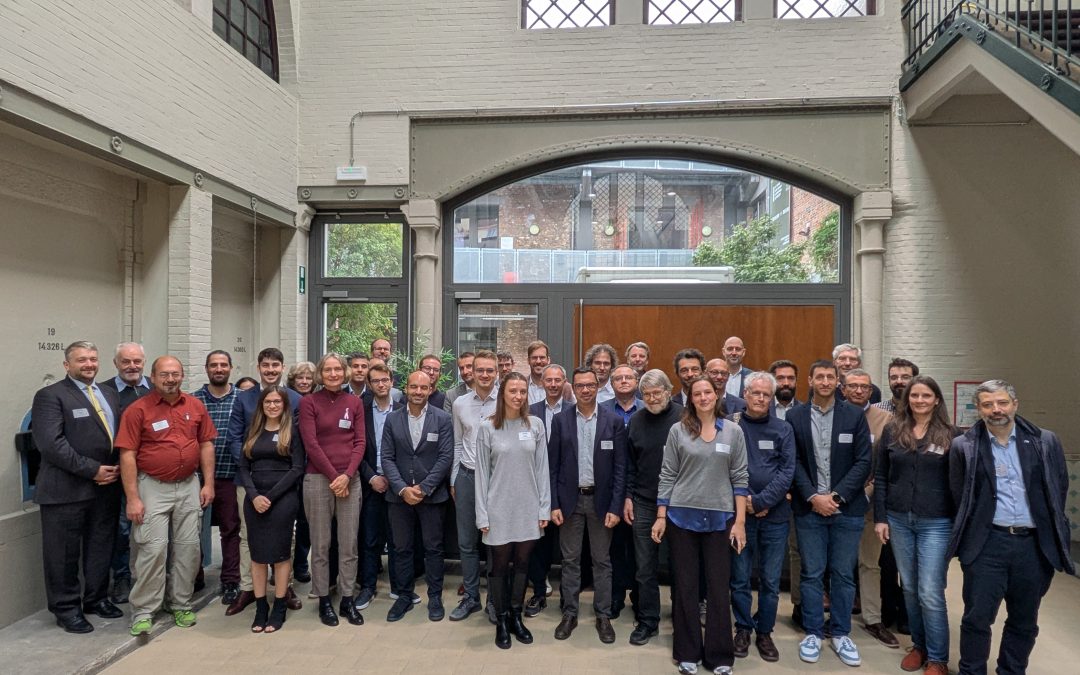The LENS project showcased results and engaged with the wider community of L-vehicle stakeholders during its final conference, which took place on 15 October 2025 at Atelier des Tanneurs in Brussels. The hybrid event was attended by around 50 participants on site and more than 20 stakeholders, who joined online from around the world.
The entire consortium would like to thank all participating representatives from the EU institutions, citizens’ initiatives, cities, OEMs, academia and vehicle manufacturers for following our invitation. We suggest you to accessing the public versions of the presentations as well as the event recording below.
The full-day event, which started with welcome words and an introduction of the project by its coordinator Leonidas Ntziachristos (EMISIA), aimed to showcase several elements of air- and noise pollution measurements of light vehicles in laboratories, under real-world driving conditions, as well as roadside measurements. Additionally, preliminary project conclusions were drawn, and potential mitigation scenarios for policymakers and cities were suggested. The event concluded with a panel discussion, which gave the floor to representatives from the L-vehicle industry, the European Commission and technical experts.
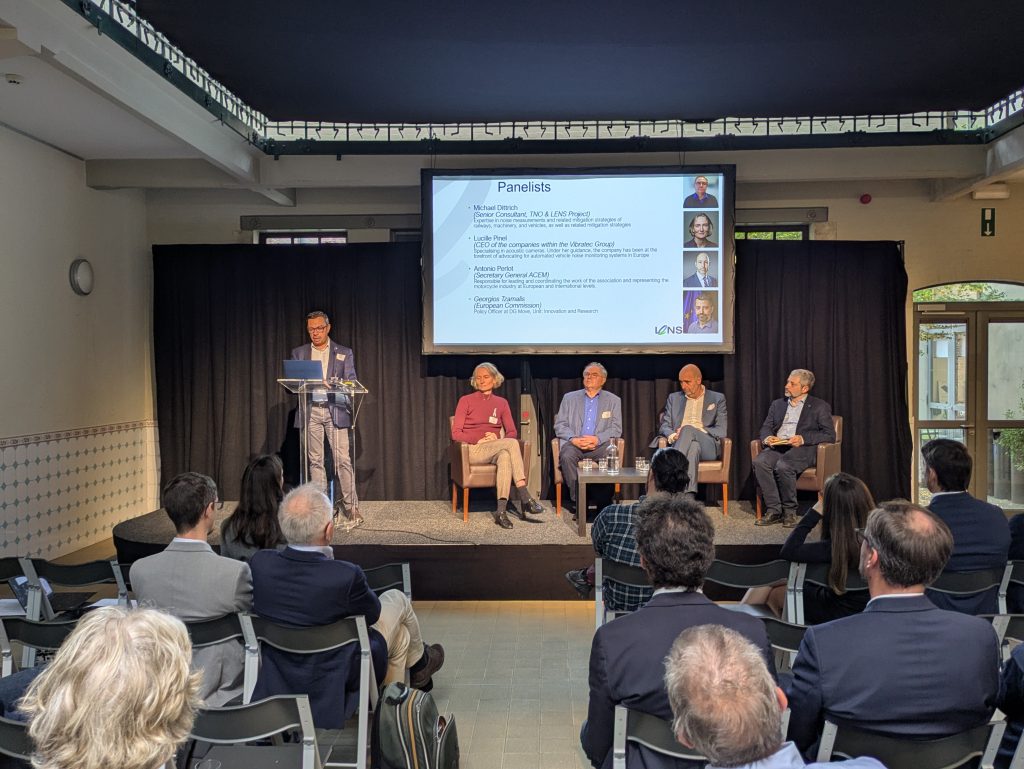
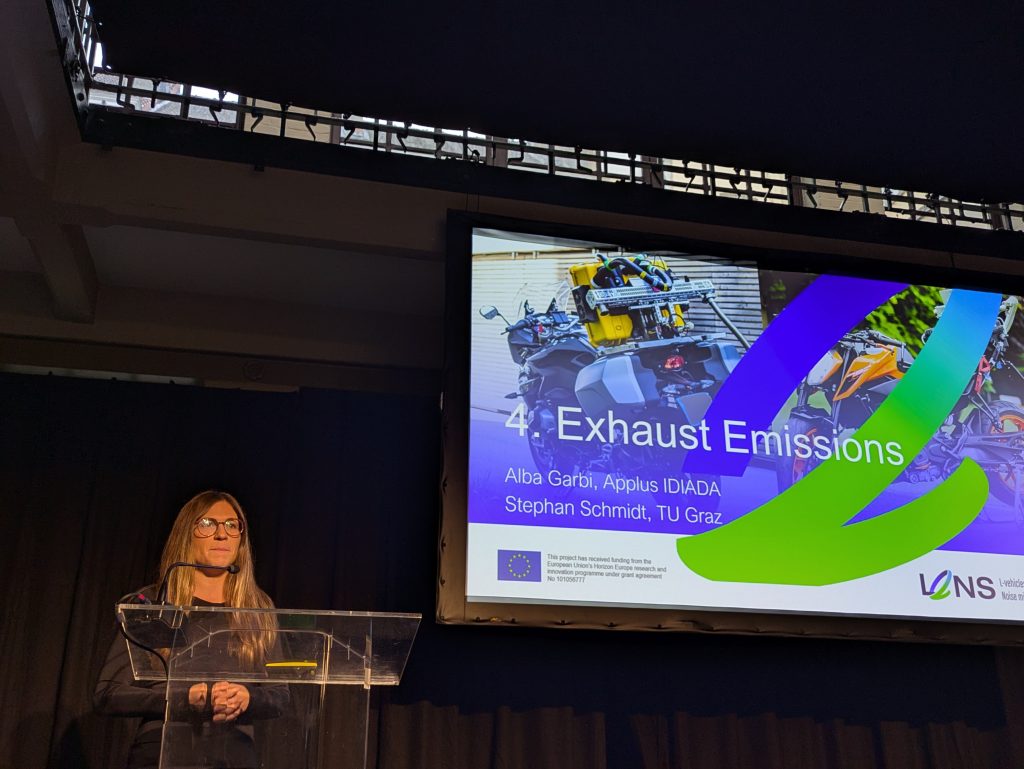
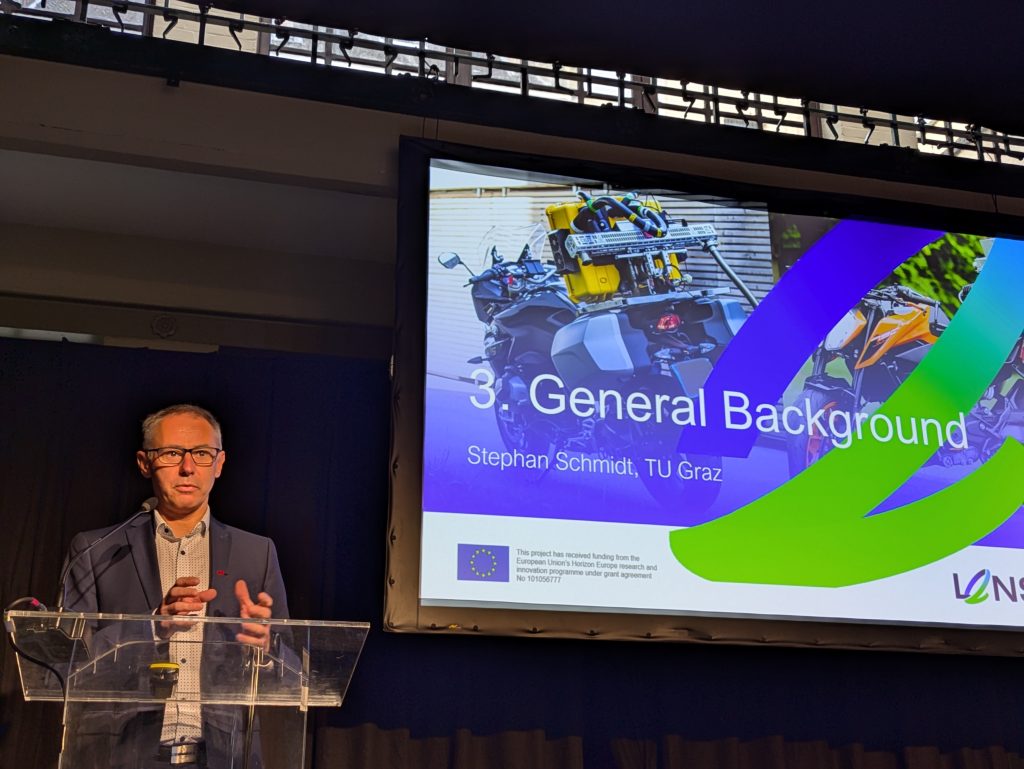
What were the results of the noise-measurement tests?
Carolin Schliephake (IKA/RWTH) summarised the findings of the noise pollution measurements of LENS and highlighted that real-world levels exceeded type approval limits. Using roadside monitoring, on-board sensors, simulations and test track trials, noise events from aggressive acceleration, revving and gear shifts were identified, reaching over 100 dB(A). Fourteen real-world driving patterns were defined, highlighting gaps in current regulations and the need to include realistic driving conditions in future noise assessments.
Which aspects of the air pollution tests were highlighted?
The presentation of Alba Garbi (IDIADA) and Stephan Schmidt (TU Graz) showcased findings from tests on over 150 L-category vehicles, including motorcycles and mopeds. While most met Euro 5 limits in Type Approval testing, real-world driving produced notably higher CO and NOx emissions. Tampering and dynamic riding further increased pollutants, and non-regulated emissions such as PN and NH₃ reached concerning levels. The study exposed weaknesses in current testing methods and urged improved procedures to better represent real-world emissions.
What are the conclusions of the in-field surveys?
Hervé Denayer (KU Leuven) and Åke Sjödin (IVL) described the LENS in-field surveys at the three pilot cities of Leuven, Paris and Barcelona. These surveys measured on-road emissions and noise from light vehicles using remote sensing and inspection instruments. Results showed that newer Euro-class vehicles emitted far fewer pollutants than older ones, but tampering raised CO, HC and PM emissions by up to tenfold. Noise tampering altered sound levels and characteristics, though type-approval improvements were not reflected in real-world measurements.
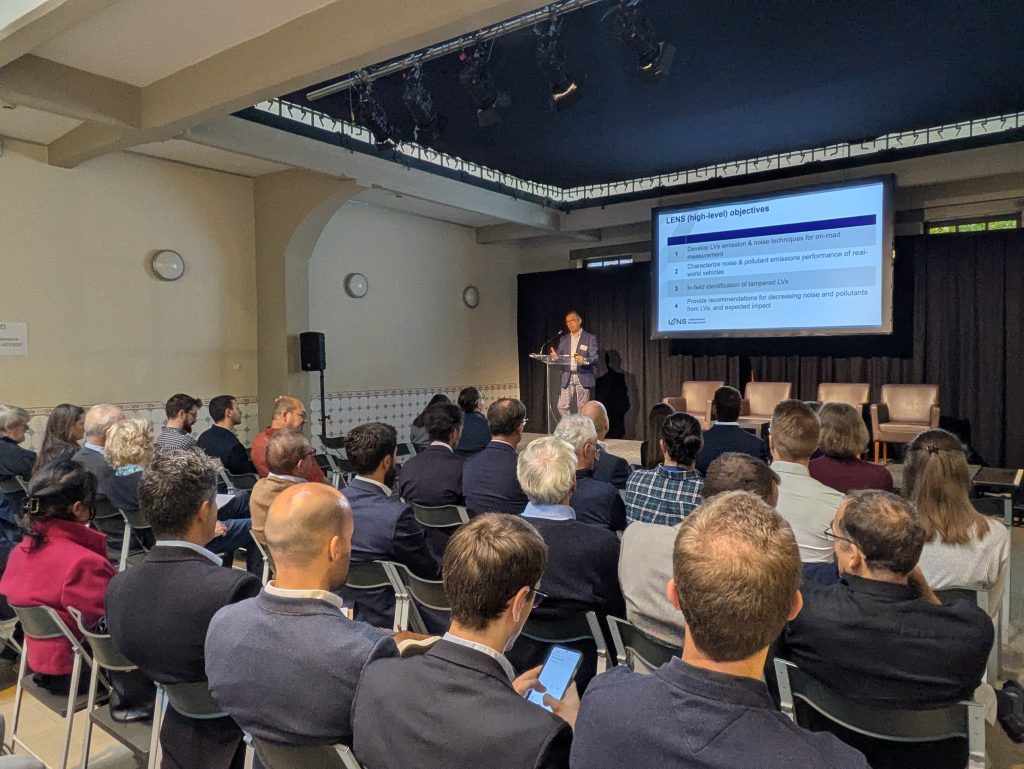
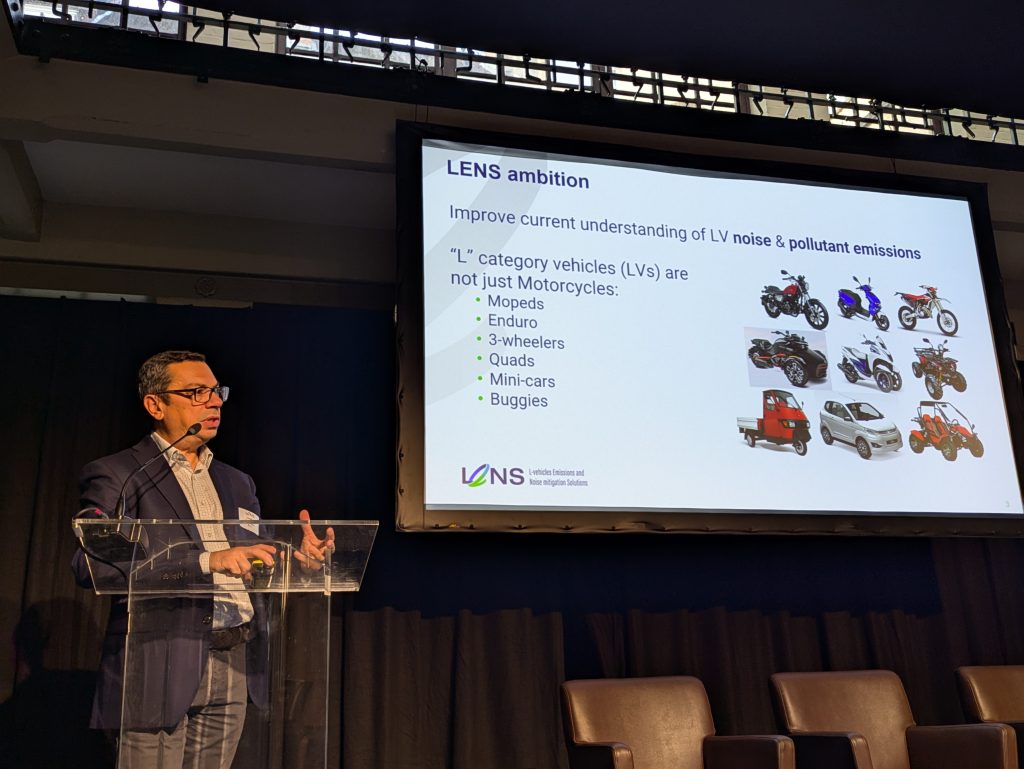
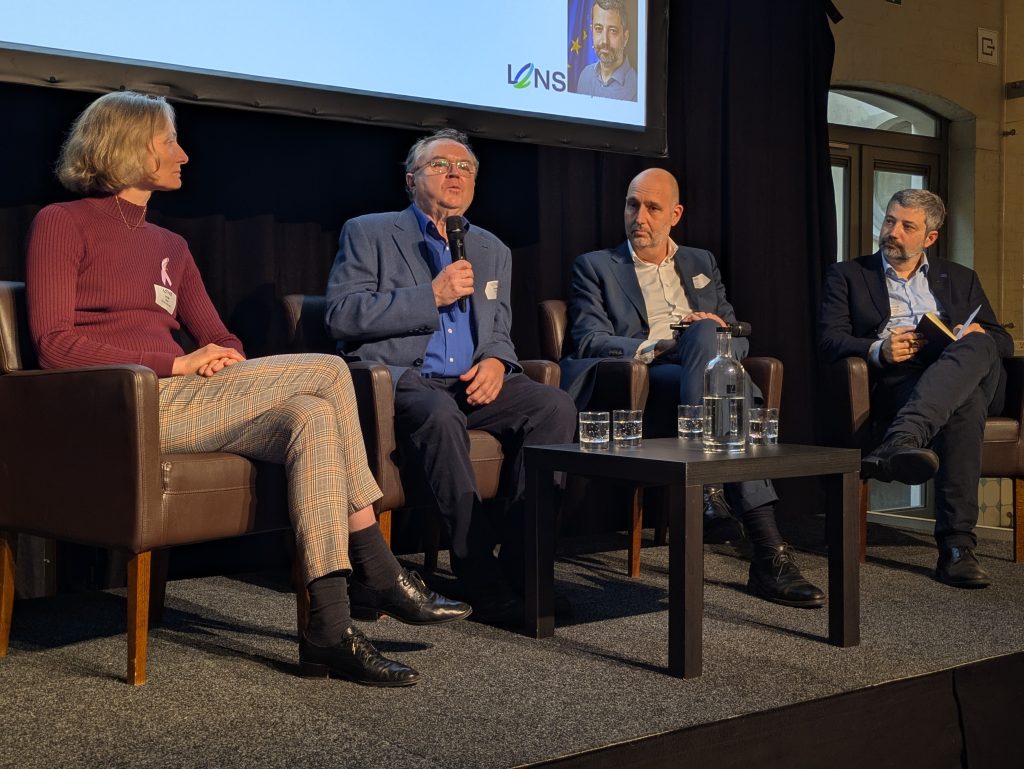
What were the positions of the panellists?
The four representatives from different stakeholder groups related to industry, technological partners, policy-makers and other experts concluded that further research and legislation to curb L-vehicle pollution is required. During the panel, Michael Dittrich (TNO) stressed that enforcement authorities must accept and support new measures, noting significant differences in national legislation.
Lucille Pinel (Vibratec) emphasised the need for joint action and the unilateral support for noise cameras by all involved entities, including the political stakeholders, citizens and the police. Educating drivers about the new solutions and proper enforcement are essential pillars to support the future rollout of this technology.
Antonio Perlot (ACEM) underlined that the industry has moved up the EURO-standards alongside the societal discussions related to the increased environmental awareness across Europe. Even though electrification of L-vehicles is an increasingly viable option for (urban) commuters, maintaining incentives to purchase vehicles still offers an efficient way to reduce noise and air pollution, while getting the most polluting vehicles off the road.
Georgios Tzamalis (European Commission) focused on evidence-based policymaking and emphasised that projects like LENS are a perfect example to support such a framework, while reminding that 20 million Europeans suffer from noise pollution. Additionally, he highlighted that the national reporting of pollution levels to the EU is essential.
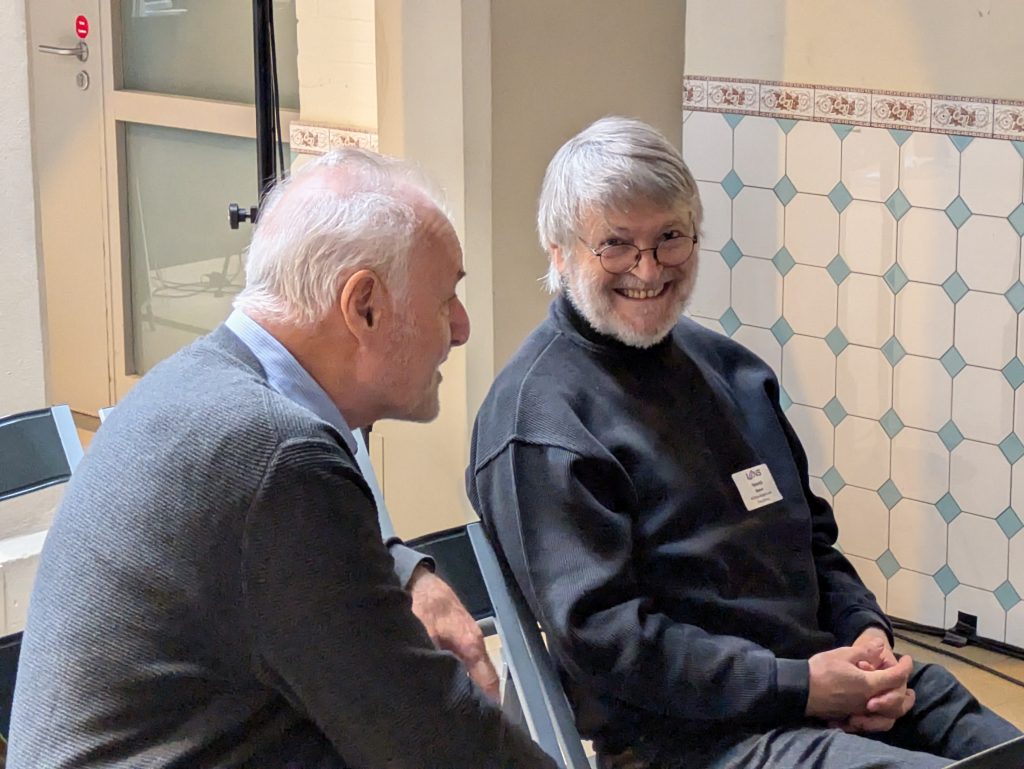
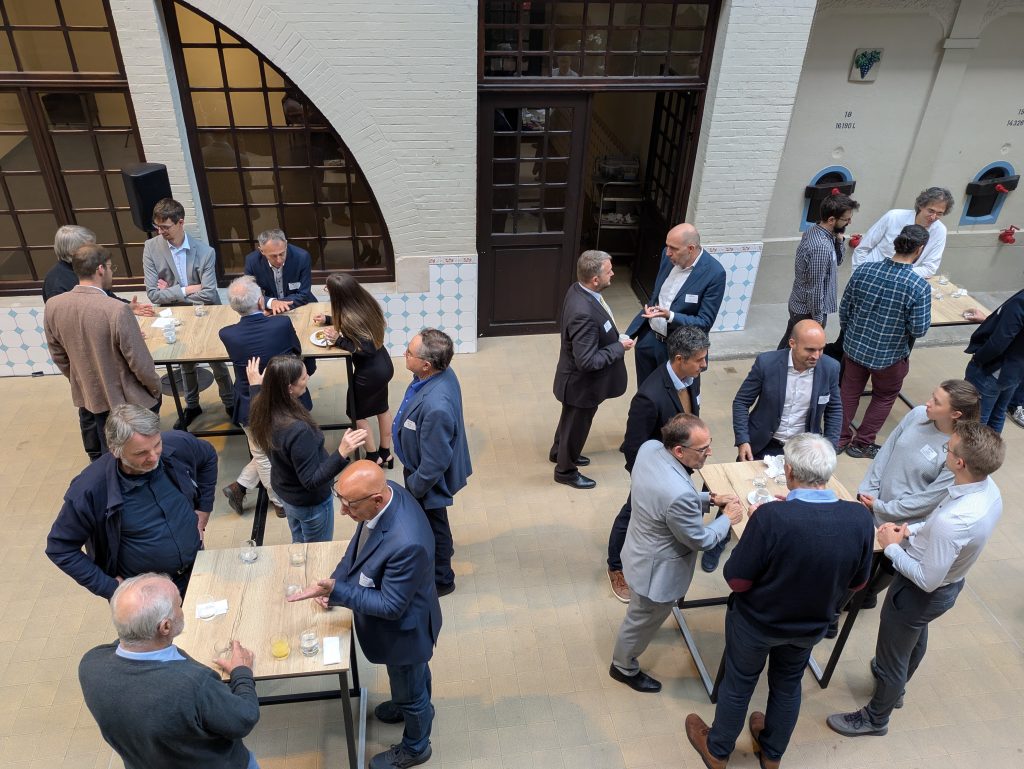
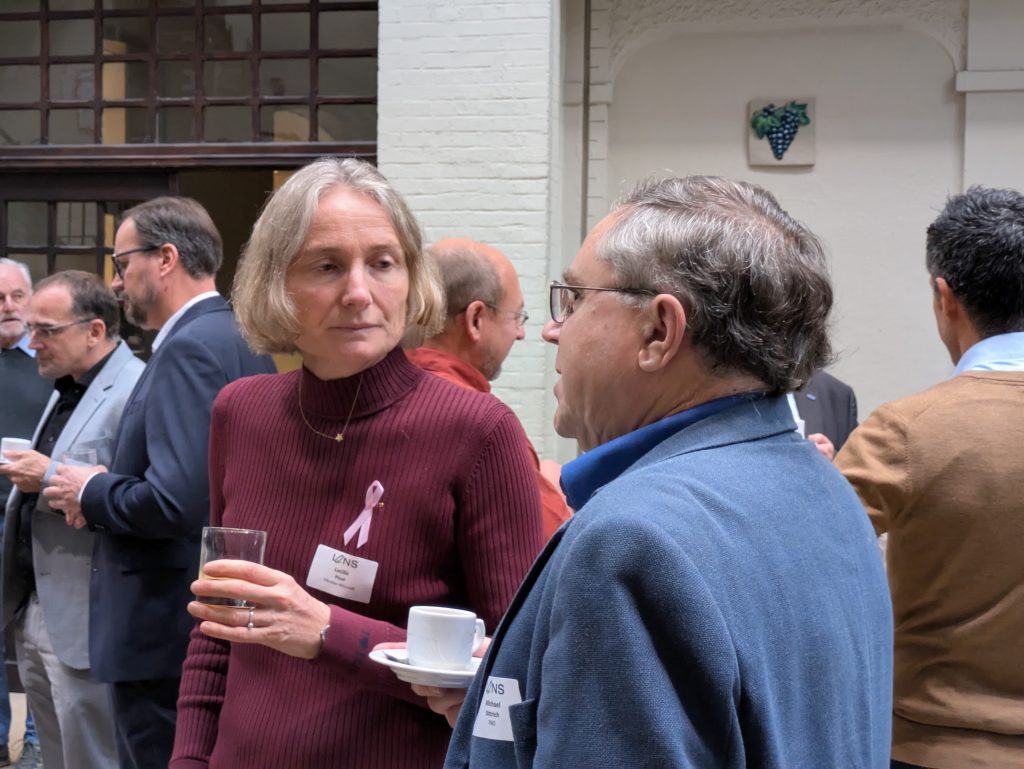
Overall, the coordinators and LENS partners drew a positive conclusion from the final conference, which was thoroughly prepared by the consortium as part of a dedicated consortium meeting at POLIS Network before the event. Especially the engaged participation of the stakeholder group, such as the citizens’ initiatives from Germany and the Netherlands (NEFOM & Bundesverband Gegen Motorradlärm) must be positively accentuated.
We are looking forward to sharing all remaining deliverables and concluding documents with you here and engage with you during the upcoming RTR Conference, which will take place on 10-12 February 2026 in Brussels, Belgium.
Presentations
Overview of the LENS project
Leonidas Ntziachristos (EMISIA, project coordinator)
General introduction to the technical aspects of the project
Stephan Schmidt (TU Graz)
Exhaust emission tests results
Alba Garbi (IDIADA)
Stephan Schmidt (TU Graz)
Noise emissions test results
Carolin Schliephake (IKA/RWTH)
In-field surveys at our three pilot cities of Leuven, Paris & Barcelona
Hervé Denayer (KU Leuven)
Åke Sjödin (IVL)
13:40 – 14:15 Mitigation measures
Giorgos Triantafyllopoulos (EMISIA)
Michael Dittrich (TNO)

